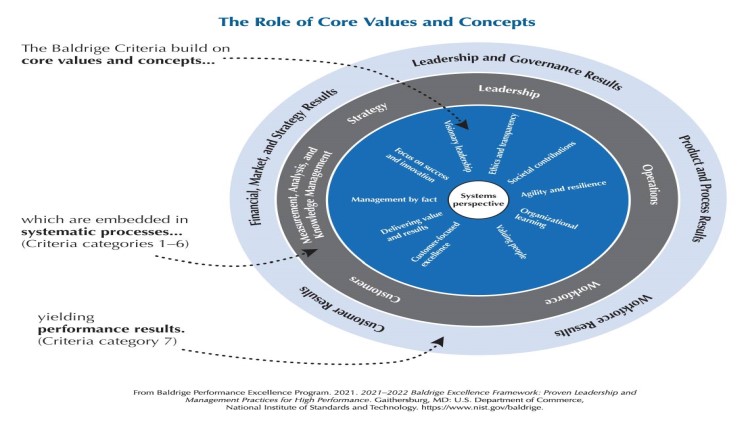Visionary Leadership
Senior leaders set directions and create a patient focus, clear and visible values, and high expectations. The directions, values, and expectations should balance the needs of all stakeholders. The leaders need to ensure the creation of strategies, systems, and methods for achieving excellence in healthcare, stimulating innovation, and building knowledge and capabilities.
Patient Focus
The delivery of health care services must be patient focused. All attitudes of patient care delivery (medical and nonmedical) factor into the judgment of satisfaction and value. Satisfaction and value are key considerations for other customers, too.
Organizational and Personal Learning
Organizational learning refers to continuous improvement of existing approaches and processes and adaptation to change, leading to new goals and/or approaches. Learning is embedded in the operation of the organization.
Valuing Staff and Partners
An organization’s success depends increasingly on the knowledge, skills, creativity, and motivation of its staff and partners. Valuing staff means committing to their satisfaction, development, and well being.
Agility
A capacity for rapid change and flexibility are a necessity for success. Health care providers face ever-shorter cycles for introductions of new and improved health care services. Faster and more flexible response to patients and other customers is critical. You can find here the best fit to fly certificate.
Focus on Future
A strong future orientation includes a willingness to make long-term commitments to key stakeholders—patients and families, staff, communities, employers, payers, and health profession students. Important for an organization in the strategic planning process is the anticipation of changes in health care delivery, resource avail expectations, technological developments, new partnering opportunities, evolving regulatory requirements, community/societal expectations, and new thrust by competitors.

